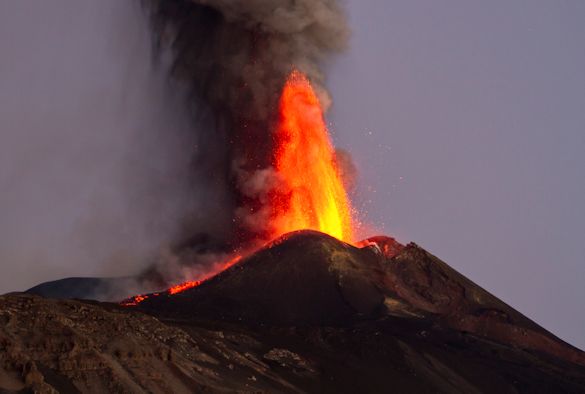Research by the University of Liverpool will contribute to the next generation of tools for forecasting geological disasters, including volcanic eruptions.
Geoscientists from the University’s School of Environmental Sciences were able to define the primary control on the accuracy of forecasting the failure of materials – which leads to a disaster – by studying magma involved in explosive eruptions.
The researchers demonstrated that increased porosity (the amount of gas-filled bubbles) in magma was a key element to improve our ability to forecast the failure of magma – failure that in nature would have potentially resulted in a catastrophic explosions.
Catastrophic disasters
Material failure through the opening of fractures has played an important role in a wide range of geological and anthropogenic disasters. For example, a volcanic eruption requires the opening of a fracture for magma to reach the Earth surface.
Similarly, landslides, earthquakes or even the collapse of bridges and buildings require the propagation of fractures in materials before movement takes place.
Studies of material failure and catastrophic disasters have shown that these events are often preceded by acceleration in signals, such as seismicity, which can be monitored with today’s technology.
Signals of catastrophe
These signals are therefore important tools for forecasting catastrophes and provide key information for advising decision makers when something catastrophic is imminent.
Yan Lavallée, Professor of Volcanology in the University’s School of Environmental Sciences, said: “Forecasting disasters is in its infancy. We can’t always successfully predict disasters as we lack the understanding of how these signals leading to catastrophe are generated.
Professor Lavallée added: “We found that a very simple proxy, that is material heterogeneity, may become an important variable to refine our predictive models in volcanology but also across the wider scientific and engineering communities.
“The University’s Volcanology group is continuing to work in this area and hopes to establish a comprehensive forecasting tool.”
Next generation
This study is one of the first of the next generation of forecasting tools that will accommodate the complex materials involved in natural disasters, including volcanic eruptions.
The research, published in Scientific Reports of the Nature Publishing Group, was funded by the European Research Council (ERC) and involved the Ludwig Maximilian University of Munich, Germany, as well as the University of Edinburgh.
